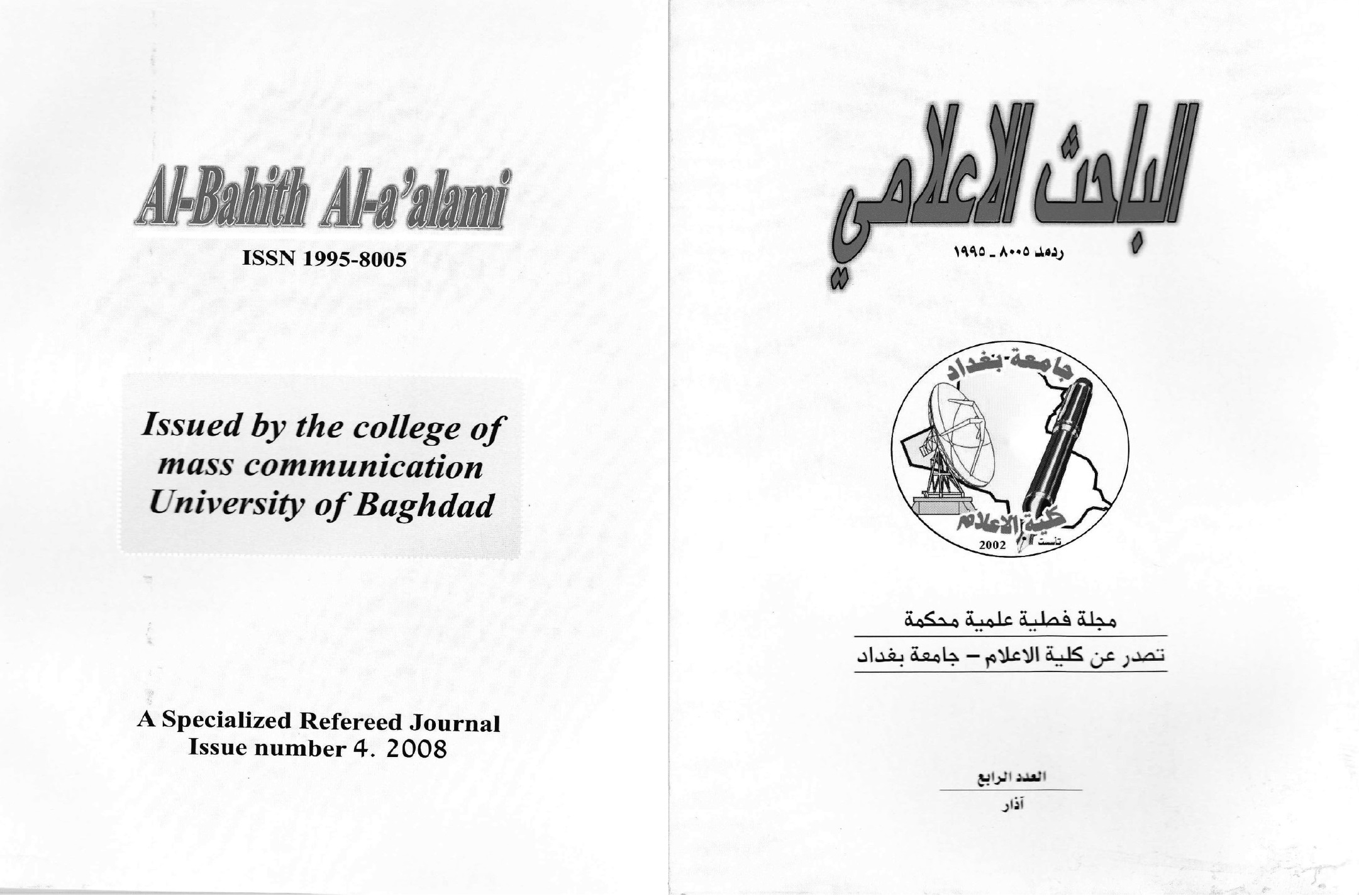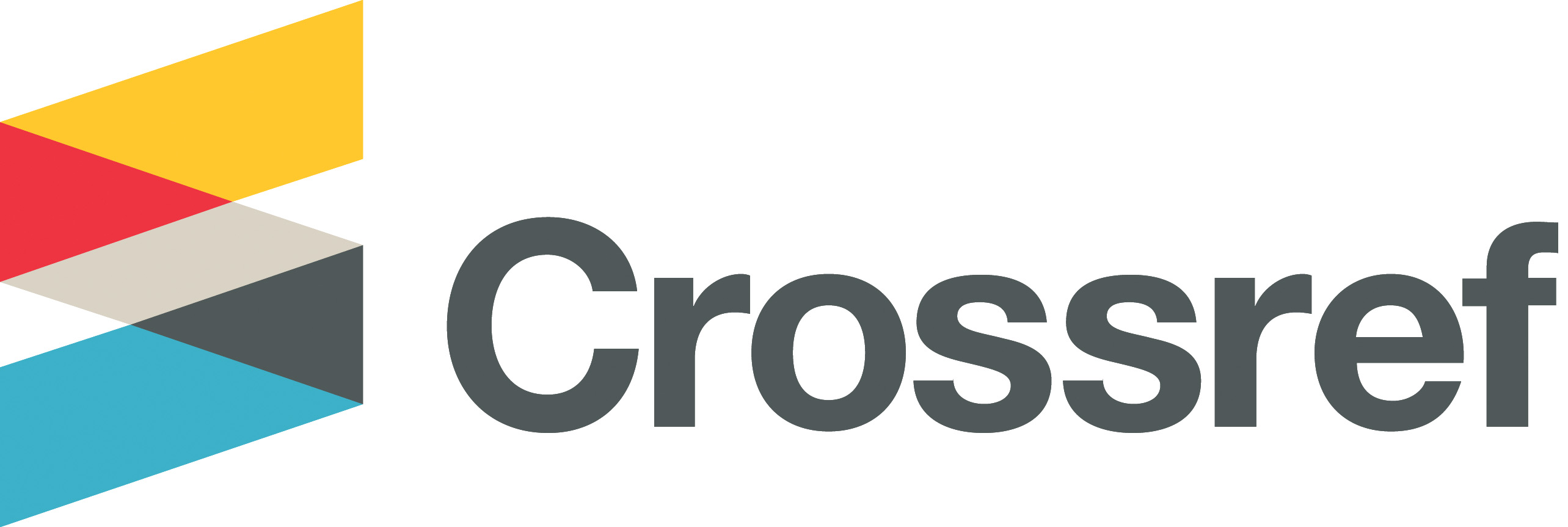DICTION (IN ARAB SATELLITE CHANNELS) A SIGNAL SYSTEM
(study of written And oral patterns)
DOI:
https://doi.org/10.33282/abaa.v1i4.468Keywords:
Diction, language, communication, semioticsAbstract
Communication has seen a big advancement through ages; concepts, procedures and technologies, it has also seen a similar advancement of language. What unites language and media is the fact that each one of them guides and contributes to the other; media exists and results from language and from the other sign systems, and what strengthens this connection is the symbolic language system, as media helps it by providing knowledge and information. The change that occurred through time must leave a significant trace in the media, for example Diction, which has changed concerning development and growth, also the ways and mediums of media have become manifold and widespread. This change affected the recipient whether it was a reader, listener or watcher; as diction became no longer read in written paragraphs where punctuation rules are respected, it neither became a representation of the meaning in an attempt to be described, but it is rather another picture represented with words and performance, along with a deep knowledge of the language’s characteristics, especially oral characteristics, As do appear the personal and phonetic features of maintaining signaling systems: word system, sentence system, text system, speech system. The modern science of language has encouraged the responsables of communication to make use of the tremendous achievements of our times since the beginning of the 20th century, especially in the development of semiotics, which became sign of this century’s development. Whilst, Linguistics is trying to summarize the special minor signifying units from the sentence. Semiotics occupies a decent position, as it aims to extrapolate the semantic system according to a unit larger than the sentence, that is the speech from which there is no benefit simply by just adding the minor signifying units that construct it. However, it is extracted
Downloads
References
2- عبد القادر الجديدي . مجلة الاذاعات العربية , تونس . العدد:3 , 2004 ص28.
3- عبد القادر الجديدي . سابق . ص29.
4- عبد القادر الجديدي . سابق . ص 31.
5- الجاحظ , البيان والتبيين , ج1 . ص75.
6- سيد البحراوي . العروض وايقاع الشعر العربي , الهيئة المصرية العامة للكتاب .د.ط.د.ت. 1993 . ص 110 .
7- ميلكا افتيش , اتجاهات البحث اللساني , (المجلس الاعلى للثقافة). ترجمة سعد عبد العزيز مصلوح , وفاء كامل فايد . القاهرة. د.ط.د.ت ص379.
8- سيد البحراوي . سابق . ص113. وينظر الخطيب التبريزي الكافي في العروض والقوافي . تحقيق الحسان حسن عبد الله , الخانجي , القاهرة 1977 .ص18.
9- عبد القادر الجديدي , سابق ص 27.
10- محمد نجيب التلاوي -مجلة الاذاعات العربية- سابق , ص32.
11- ميلكا افتيش . اتجاهات البحث اللساني . سلبق ص236.
12- ميلكا افتيش . سابق ص236.
13- محمد علي الخولي . مدخل الى علم اللغة . دار الفلاح للنشر , عمان، ط1 - 1993 .ص53.
14- محمد علي الخولي . سابق . ص55.
15- محمد علي الخولي . سابق . ص55
16- المصدر السابق ص55.
17- المصدر السابق . ص56
18- ميلكا افتيش . اتجاهات البحث اللساني . سابق ص347 .
المصادر
1- الجاحظ ، البيان والتبيين ، تحقيق وشرح عبد السلام هاون ، ط2 .
2- الخطيب التبريزي : الكافي في العروض والقوافي ، تحقيق الحساني حسن عبد الله ، مطبعة القاهرة ، 1977 .
3- سيد البحراوي ، العروض وايقاع الشعر العربي ، الهيئة المصرية العامة للكتاب / د.ط / القاهرة 1993.
4- عادل فاخوري ، تيارات السيمياء . دار الطليعة بيروت ، ط ، 1990.
5- محمد رضا مبارك ، اللغة الشعرية في الخطاب النقدي ، دار الشؤون الثقافية ، بغداد ، ط 1993.
6- محمد علي الخولي ، مدخل الى علم اللغة ، دار الفلاح للنشر ، عمان ، ط 1993.
7- ميليكافيتش ، اتجاهات البحث اللساني (المجلس الاعلى للثقافه) ترجمة د. سعد عبد العزيز مصلوح و د. وفاء كامل فايد . القاهرة د.ط / د.ت .
8- مجلة الاذاعات العربية ، العدد الثالث ، تونس 2004 .
1- Adel Fakhoury. Streams in alchemy. Vanguard House. Beirut, 1990 p. 8.
2- Abdul Qadir Al-Jadidi. Arab Radio Magazine, Tunisia. Issue: 3, 2004 p 28.
3- Abdul Qadir Al-Jadidi. Previous. P. 29.
4- Abdul Qadir Al-Jadidi. Previous. P. 31.
5- Al-Jahiz, the statement and the identification, part 1. P. 75.
6- Syed Al-Bahrawi. Performances and rhythm of Arabic poetry, the Egyptian General Book Authority. 1993. P. 110.
7- Milka Fetish, Linguistic Research Trends, (Supreme Council of Culture). Translated by Saad Abdul Aziz Maslouh, Wafa Kamel Fayed. Cairo. DDT, p. 379.
8- Syed Al-Bahrawi. Previous. P. 113. And Al-Khatib Al-Tabrizi is sufficient in the shows and rhymes. Hassan Hassan Abdullah investigation, Al-Khanji, Cairo 1977, p. 18.
9- Abdul Qadir Al-Jadidi, previous p. 27.
10- Muhammed Najeeb Al-Talawi - Arab Radio Magazine - Ibid, p. 32.
11- Milka Fetish Linguistic search directions. Silaq, p. 236.
12- Milka Fetish Previous p. 236.
13- Mohamed Ali El-Khouly. Introduction to linguistics. Al-Falah Publishing House, Amman, 1 st 1993 - p. 53.
14- Mohamed Ali El-Khouly. Previous. P. 55.
15- Mohamed Ali El-Khouly. Previous. P. 55
16- Ibid., P. 55.
17- Ibid. P. 56
18- Milka Fetish Linguistic search directions. Previous p. 347.
Sources
1- Al-Jahiz, Al-Bayan and al-Tabyeen, Investigation and Explanation of Abd al-Salam Hawn, 2nd edition.
2- Al-Khatib Al-Tabrizi: Al Kafi in Performances and Rhymes, investigation by Al-Hassani Hassan Abdullah, Cairo Press, 1977.
3- Syed Al-Bahrawi, Presentations and the rhythm of Arabic poetry, The Egyptian General Book Authority / Dr. / Cairo 1993.
4- Adel Fakhoury, The Streams of Al-Simeia. The Vanguard House, Beirut, i, 1990.
5- Muhammad Reda Mubarak, Poetic Language in Critical Discourse, House of Cultural Affairs, Baghdad, 1993 edition.
6- Muhammad Ali Al-Khouli, Introduction to Linguistics, Al-Falah Publishing House, Amman, 1993 edition.
7 - Milikavich, Trends in Linguistic Research (Supreme Council of Culture), translation by Dr. Saad Abdul-Aziz Maslouh and d. Full fulfillment Fayed. Cairo d / d.
8- Arab Broadcasting Magazine, Third Issue, Tunisia 2004.
Downloads
Key Dates
Published
Issue
Section
License
Copyright (c) 2008 author

This work is licensed under a Creative Commons Attribution 4.0 International License.
Authors retain copyright and grant the journal right of first publication with the work simultaneously licensed under a Creative Commons Attribution License (CC BY 4.0) that allows sharing the work with recognition of authorship and initial publication in ABBA journal.


















